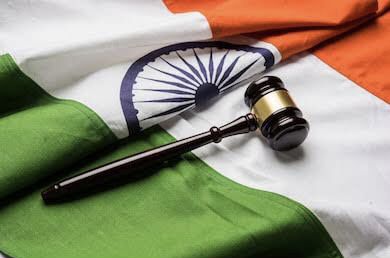Exploring The Intricate Landscape Of Enforcing And Litigating Intellectual Property Rights: Lessons From Legal Cases
Ensuring the protection of innovative and creative outputs is a crucial
element in the field of intellectual property rights (IPR) enforcement and
litigation. IPR holders preserve the integrity and respect for their exclusive
rights by employing legal action against infringements. This discussion explores
the diverse terrain of intellectual property rights (IPR) enforcement and legal
action, supported by recent court cases that illuminate the many intricacies of
this field.
The enforcement of intellectual property rights (IPR) plays a critical role in preventing the improper exploitation of patents, copyrights, trademarks, and other intellectual assets. In addition to providing personal security, the presence of robust enforcement procedures fosters a dynamic innovation ecosystem, creating an atmosphere where creators are motivated to invest in research and development without concerns about illegal replication.
IPR litigation refers to legal procedures that are started to resolve alleged infringements of intellectual property rights. IPR litigation requires specialist knowledge due to the complexities associated with patent disputes over innovative technology and copyright infringements in the digital realm. The responsibility of courts and specialized forums is to resolve complex intellectual property cases.
The case examined the distinction between design patents and utility patents. Design patents safeguard the visual or decorative elements of a product, whereas utility patents encompass the practical and operational characteristics. This case highlighted the importance of design patents in the consumer electronics industry and showed how design infringement can impact market dynamics.
The ruling underscored the significance of the "fair use" principle, which permits the restricted utilization of copyrighted content without explicit authorization for purposes such as critique, commentary, news reporting, education, scholarship, or research. The verdict emphasized the importance of APIs in the software industry and the requirement to maintain a balance between copyright protection and the promotion of innovation and interoperability.
The ruling upheld the principle of "trademark infringement" and emphasized the obligation of businesses to prevent any confusion among customers about the source or quality of products resulting from their use of trademarks. Furthermore, it underscored the need of protecting brand reputation and fostering consumer trust. IPR enforcement and litigation in all of these instances demonstrated the delicate equilibrium between safeguarding intellectual property rights and promoting innovation.
The intricacies examined in these instances provide valuable understanding of how courts interpret and enforce intellectual property rules in response to modern difficulties presented by technology and creative expression. Legal experts, inventors, and artists can acquire useful insights into the changing landscape of IPR enforcement and litigation by comprehending these cases.
Exploring Fundamental Elements:
In Conclusion:
The complex network of enforcing and litigating Intellectual property rights is evidence of the importance of safeguarding creative and innovative pursuits. Recent legal precedents highlight the complex connections between law and innovation, revealing the development of legal ideas. By understanding the intricacies of intellectual property rights (IPR) enforcement and litigation, individuals and organizations can effectively negotiate these complex matters, protecting their innovative accomplishments while also contributing to the development of a creative and innovative global environment.
End-Note:
The enforcement of intellectual property rights (IPR) plays a critical role in preventing the improper exploitation of patents, copyrights, trademarks, and other intellectual assets. In addition to providing personal security, the presence of robust enforcement procedures fosters a dynamic innovation ecosystem, creating an atmosphere where creators are motivated to invest in research and development without concerns about illegal replication.
IPR litigation refers to legal procedures that are started to resolve alleged infringements of intellectual property rights. IPR litigation requires specialist knowledge due to the complexities associated with patent disputes over innovative technology and copyright infringements in the digital realm. The responsibility of courts and specialized forums is to resolve complex intellectual property cases.
Judicial precedents: Illuminating the Complexity:
Apple Inc. v. Samsung Electronics Co. Ltd. (2018):
A legal case involving the violation of design patents by Samsung Electronics Co. Ltd. against Apple Inc. This dispute revolved around allegations of design patent infringement, with Apple accusing Samsung of imitating the design of its smartphones, including the curved edges and array of vibrant icons. The court's ruling underscored the significance of design patents in the technology sector, where the aesthetic aspects of products can have a substantial impact on consumer choice and market rivalry.The case examined the distinction between design patents and utility patents. Design patents safeguard the visual or decorative elements of a product, whereas utility patents encompass the practical and operational characteristics. This case highlighted the importance of design patents in the consumer electronics industry and showed how design infringement can impact market dynamics.
Oracle America, Inc. v. Google LLC (2021)
It is a legal case that involves copyright infringement in software APIs. This lawsuit centered on the matter of copyright infringement in software application programming interfaces (APIs). Oracle said that Google violated its copyrights by incorporating components of the Java programming language into the Android operating system. The lawsuit analyzed whether Google's utilization of these APIs constituted fair use according to copyright law.The ruling underscored the significance of the "fair use" principle, which permits the restricted utilization of copyrighted content without explicit authorization for purposes such as critique, commentary, news reporting, education, scholarship, or research. The verdict emphasized the importance of APIs in the software industry and the requirement to maintain a balance between copyright protection and the promotion of innovation and interoperability.
Tiffany & Co. v. Costco Wholesale Corp. (2020):
It pertains to the legal safeguarding of trademarks. Tiffany & Co. filed a lawsuit against Costco for selling diamond engagement rings that were falsely labeled as "Tiffany" rings. The disagreement revolved around whether Costco's utilization of the term "Tiffany" violated Tiffany's trademark rights. The case underscored the significance of safeguarding renowned trademarks against dilution and unlawful utilization, especially within established retail establishments.The ruling upheld the principle of "trademark infringement" and emphasized the obligation of businesses to prevent any confusion among customers about the source or quality of products resulting from their use of trademarks. Furthermore, it underscored the need of protecting brand reputation and fostering consumer trust. IPR enforcement and litigation in all of these instances demonstrated the delicate equilibrium between safeguarding intellectual property rights and promoting innovation.
The intricacies examined in these instances provide valuable understanding of how courts interpret and enforce intellectual property rules in response to modern difficulties presented by technology and creative expression. Legal experts, inventors, and artists can acquire useful insights into the changing landscape of IPR enforcement and litigation by comprehending these cases.
Exploring Fundamental Elements:
- Preventive Strategies: Prior to engaging in litigation, proactive methods such as sending cease-and-desist letters and engaging in discussions are commonly used to minimize conflicts and protect intellectual property rights.
- Jurisdictional Strategy: The process of selecting the most suitable jurisdiction for legal action involves careful analysis, since certain areas may provide more advantageous legal systems for intellectual property (IP) safeguarding.
- The burden of proof rests with the plaintiff to provide substantial evidence in order to support charges of infringement.
- Specialized individuals who provide professional opinions and testimony based on their expertise in a particular field, typically in a legal setting. Expert witnesses provide detailed explanations of intricate technological or artistic details to assist the court.
- Remedies: In order to stop infringements and pay for losses, remedies such as injunctive relief and damages are pursued.
- Global Considerations: The global economy necessitates the skillful navigation of international treaties and accords to provide consistent and effective protection and enforcement of intellectual property.
In Conclusion:
The complex network of enforcing and litigating Intellectual property rights is evidence of the importance of safeguarding creative and innovative pursuits. Recent legal precedents highlight the complex connections between law and innovation, revealing the development of legal ideas. By understanding the intricacies of intellectual property rights (IPR) enforcement and litigation, individuals and organizations can effectively negotiate these complex matters, protecting their innovative accomplishments while also contributing to the development of a creative and innovative global environment.
End-Note:
- The case of Apple Inc. v. Samsung Electronics Co. Ltd., 138 S. Ct. 429 (2018) is being referred to.
- Oracle America, Inc. v. Google LLC is a legal case that was decided by the Supreme Court of the United States. The case is commonly referred to as 141 S. Ct. 2291 and was decided in 2021.
- The case of Tiffany & Co. v. Costco Wholesale Corp., 971 F.3d 1125 (2d Cir. 2020) is a legal matter that was decided by the Second Circuit Court of Appeals in the year 2020.
- Merges, R. P., Menell, P. S., and Lemley, M. A. (2019). The concept of intellectual property in the modern era of technology. Wolters Kluwer is a company.
- Guibault, L., and Wiebe, A. (Editors). The year is 2019. Food security and agrobiodiversity face challenges in the context of the Commons, plant breeding, and agricultural research. Routledge is a publishing company.
- Gervais, D. J. (2016). The title of the book is "The TRIPS Agreement: Drafting History and Analysis (4th ed.)". Sweet & Maxwell is a legal publishing company.
- Lemley, M. A., and Reese, R. A. (Editors). 2020. Exploring the concept and application of Intellectual Property Rights in a digitally interconnected world. The publisher is Cambridge University Press.
- The book titled "Patent Law and Policy: Cases and Materials" is authored by Lunney, G. S., and Beachboard, J. T. It is the 8th edition of the book. West Academic Publishing.
- Rosen, G. (2021). Intellectual Property: Cases, Materials, and Commentary (8th edition). Published by Thomson Reuters.
- Samuelson, P. (2021). The title of the book is "Intellectual Property Law and Policy: Cases and Materials (6th ed.)". West Academic Publishing.
Award Winning Article Is Written By: Dr.Poornima Eknath Surve: Head Of Department - Dr D. Y Patil Colllege Of Law Nerul Navi Mumbai
Authentication No: MY450713428805-20-0524
Law Article in India
Legal Question & Answers
Lawyers in India - Search By City
LawArticles
How To File For Mutual Divorce In Delhi

How To File For Mutual Divorce In Delhi Mutual Consent Divorce is the Simplest Way to Obtain a D...
Increased Age For Girls Marriage

It is hoped that the Prohibition of Child Marriage (Amendment) Bill, 2021, which intends to inc...
Facade of Social Media

One may very easily get absorbed in the lives of others as one scrolls through a Facebook news ...
Section 482 CrPc - Quashing Of FIR: Guid...

The Inherent power under Section 482 in The Code Of Criminal Procedure, 1973 (37th Chapter of t...
The Uniform Civil Code (UCC) in India: A...

The Uniform Civil Code (UCC) is a concept that proposes the unification of personal laws across...
Role Of Artificial Intelligence In Legal...

Artificial intelligence (AI) is revolutionizing various sectors of the economy, and the legal i...









Please Drop Your Comments